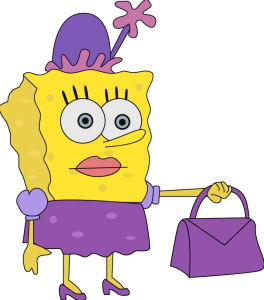The beauty in what constitutes humor nowadays
There was a little boy sitting on the street. A man, Noah Centineo, approached this little boy and said, “It doesn’t matter what you’ve done. It matters what you do with what you’ve done…for others.” That little boy grew up to be St. Ignatius of Loyola, hence our Jesuit mission of being “with and for others.”
If you didn’t understand that opening line, that’s honestly kind of the point. If at first glance, you don’t fully understand the content of a meme or a tweet, then you simply do not understand the joke. Memes and online humor have evolved into a whole new level, requiring a certain level of intuitive understanding to grasp why they are funny.
The opening of this piece mirrors the typical layout of meme discourse nowadays, and while humor and memes used to be more straightforward, that has since evolved—such is life.
Meme culture used to be simply a handful of poorly made graphics or grainy photos with bold Impact font statements. They were merely captions on photos, and they made immediate sense.

For example, the viral image of Bad Luck Brian, a nerdy high school boy with a scrappy haircut, plaid sweater vest and a mouthful of braces, was one of the most popular. The first line on the photo would read “Parents surprise him with concert tickets,” and the following punchline would then read “Nickelback.”
While 9-year-old me just busted a gut laughing at this Nickelback jab, 19-year-old me just cringed at how this used to be considered a joke. The threshold for what constitutes a joke has significantly fallen: the bar is basically on the floor at this point.
Not only that, but while low-bar memes and humor have become significantly more common, meme trends have cycled in and out faster and faster each day. Over the past few weeks, several meme trends have come and gone.
Some personal favorites include the following. First, the literal two second video of a Bratz doll going, “EWWWW.” with captions such as “Emma Watson reading her initials be like,” is a classic.
Or perhaps this trend: “if I were richard nixon I would simply not do the watergate scandal” (@goodbeanalt) or “if I were an NBA player I would simply shoot the ball into the basket and not miss” (@jodieegrace).
Let’s not forget about this classic, as demonstrated by the following: “communication majors be like I have a conversation due Thursday” (@clairesonn), “english majors be like furthermore” (It- sLumberzach) and “undecided majors be like damn” (@AJ_Jerimiah).
While these are only three of my favorite recent trends, there are countless more circling around Twitter. Each meme trend has about a solid two days of glory before being cycled out for yet another joke that literally makes no sense.
Yet, this is the beauty in online humor now. Not only are there more things to laugh about due to the higher volume and faster pace of tweets and jokes, the fact that the simplest things in life can be made into a joke is something to be happy about.
People truly bond over these jokes, both online and in person. The ambiguous and confusing punchlines (if you can even call them that anymore) bring young people (sorry boomers) together in ways I cannot yet understand.
 In an era of fast paced news and a seemingly higher propensity to consume negative news, finding humor in little things is a heartening aspect of this media landscape.
In an era of fast paced news and a seemingly higher propensity to consume negative news, finding humor in little things is a heartening aspect of this media landscape.
Twitter memes honestly make no sense. Someone who has not grown up in this landscape of humor and rather grew up with the Seinfeld observational method of standup would simply not understand these tweets. And sometimes, even I don’t understand the most obscure of jokes.
But they are undoubtedly funny if you have a worthwhile sense of humor. They are low effort jokes that appeal to what may seem like an audience with an expectation for humor that is on the floor. But that is precisely the beauty of online humor, and it’s just flat out funny.













































